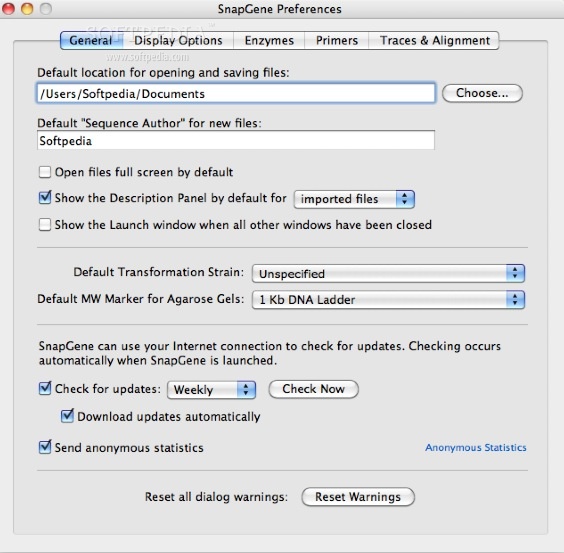
- #Mit snapgene serial
- #Mit snapgene windows
The goal is to move from an operations-centric model to a service-centric model, to better align services with the needs of the customer. In 2016, IS&T formed a steering committee to guide the organization’s adoption of ITSM (IT Service Management), a process-based practice intended to align consumable IS&T services with the needs of the MIT community.
Change Review Board - created March 2015. Pipeline - pre-dates the transformation. User Experience Review Board - created June 2016.  Architecture Review Board - created October 2015. Work Prioritization Team - created October 2015. Over the course of 2015, IS&T formalized the new Project and Portfolio Management team and established a number of advisory and review boards to give leadership a clearer picture of the work of the department, and to ensure that the proper resources are in place for success. Creation of the Individual Contributor Advisory Team, chartered to help give voice to non-management staff members in building relationships across the organization, increasing transparency and knowledge sharing. Creation of the new Platform Development & Support team to deliver on-going development and support for existing platforms and for new platforms ready to be deployed at scale. Consolidation of two teams into a single, enterprise-wide Integration team. Expansion of the IT Ecosystem Architecture team to provide technical leadership and oversight. Creation of the Platform Engagement team for delivery of new platform-based systems, services, and solutions.
Architecture Review Board - created October 2015. Work Prioritization Team - created October 2015. Over the course of 2015, IS&T formalized the new Project and Portfolio Management team and established a number of advisory and review boards to give leadership a clearer picture of the work of the department, and to ensure that the proper resources are in place for success. Creation of the Individual Contributor Advisory Team, chartered to help give voice to non-management staff members in building relationships across the organization, increasing transparency and knowledge sharing. Creation of the new Platform Development & Support team to deliver on-going development and support for existing platforms and for new platforms ready to be deployed at scale. Consolidation of two teams into a single, enterprise-wide Integration team. Expansion of the IT Ecosystem Architecture team to provide technical leadership and oversight. Creation of the Platform Engagement team for delivery of new platform-based systems, services, and solutions.  Creation of Community Partnership teams, comprised of Business Analysts, each aligned with a community segment to create a clearer path for engagement with IS&T. All staff members received training introducing agile methodologies.Īfter a period of iterative adjustments, version 1.5 of the organization was put into effect in October 2015. The restructuring of IS&T began in February 2015 with an initial transition (version 1.0) from an organization with seven areas and 37 teams to three areas with 14 teams.ĭuring this period, a Change Management Team made up of IS&T staff members assisted fellow staff in transitioning responsibilities within the new organization. This move to a more agile, responsive operating model involved transformations in people, process, and infrastructure to bring about enhanced ability to deliver services at scale and to meet the changing needs of the community while modernizing existing systems. Implementation of the strategic plan for realizing the 2020 Vision began with the announcement in February 2015 of a new operating model and structure for the Information Systems & Technology organization. Multiple alignment and realignment of DNA/RNA/protein sequences Find/highlight DNA restriction sites and DNA fragments Copy/paste the selected DNA sequence with features Generate DNA features database and perform features annotation Generate and edit DNA/protein features for genbank/genpept format files Generate Plasmid, Linear and Text map using feature annotations from genbank file View GC content, CpG islands and Stem Loops
Creation of Community Partnership teams, comprised of Business Analysts, each aligned with a community segment to create a clearer path for engagement with IS&T. All staff members received training introducing agile methodologies.Īfter a period of iterative adjustments, version 1.5 of the organization was put into effect in October 2015. The restructuring of IS&T began in February 2015 with an initial transition (version 1.0) from an organization with seven areas and 37 teams to three areas with 14 teams.ĭuring this period, a Change Management Team made up of IS&T staff members assisted fellow staff in transitioning responsibilities within the new organization. This move to a more agile, responsive operating model involved transformations in people, process, and infrastructure to bring about enhanced ability to deliver services at scale and to meet the changing needs of the community while modernizing existing systems. Implementation of the strategic plan for realizing the 2020 Vision began with the announcement in February 2015 of a new operating model and structure for the Information Systems & Technology organization. Multiple alignment and realignment of DNA/RNA/protein sequences Find/highlight DNA restriction sites and DNA fragments Copy/paste the selected DNA sequence with features Generate DNA features database and perform features annotation Generate and edit DNA/protein features for genbank/genpept format files Generate Plasmid, Linear and Text map using feature annotations from genbank file View GC content, CpG islands and Stem Loops 
View ABI sequencing chromatogram, edit sequence Find sequence motifs (repeats, palindromes, stem loops and arbitrary sequences) in DNA sequence Tm, %GC, Mw, length of selected DNA and protein Mw (average and monoisotopic), length of protein, amino acid composition, protein net charge Transcribe, reverse complement and translate DNA sequence
#Mit snapgene serial
The program reads files created by Serial Cloner(.xdna), DNA Strider(.xdna), SnapGene(.dna) and ApE (.ape) programs. The program includes custom algorithms for: the protein/DNA sequences alignment, protein secondary structures prediction, RNA-seq differential expression.
#Mit snapgene windows
The user interface was developed around a minimalistic design and ease of use, such as: direct access to functions in less than three clicks, essential functionality with a minimum of settings, minimisation of windows (uncluttered screen). It also provides a set of useful calculators for molecular biology. It is a suite of the bioinformatic tools for the analysis of DNA, RNA, and protein sequences, as well as images of gels, blots, cells and colonies. This program is aimed at researches in the molecular biology field for use in their everyday routine work. BioLabDonkey is one time purchase app with lifetime updates including new features.







 0 kommentar(er)
0 kommentar(er)
